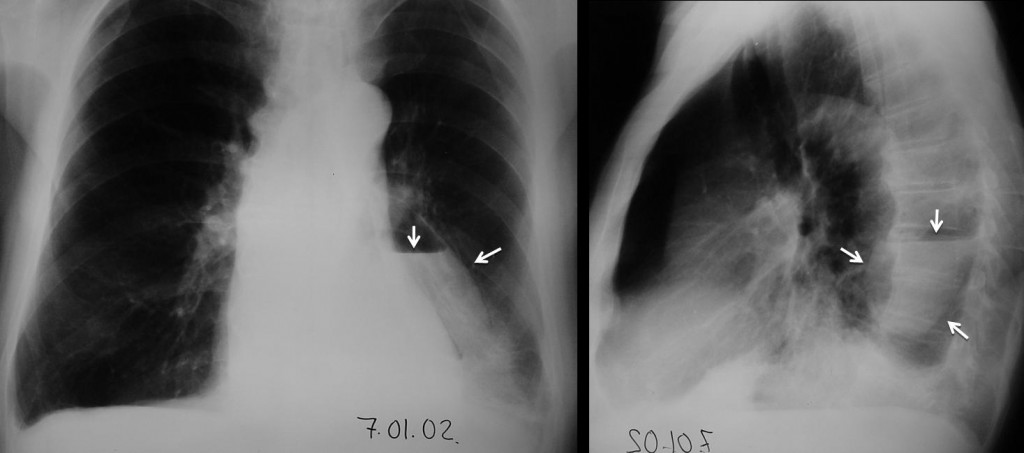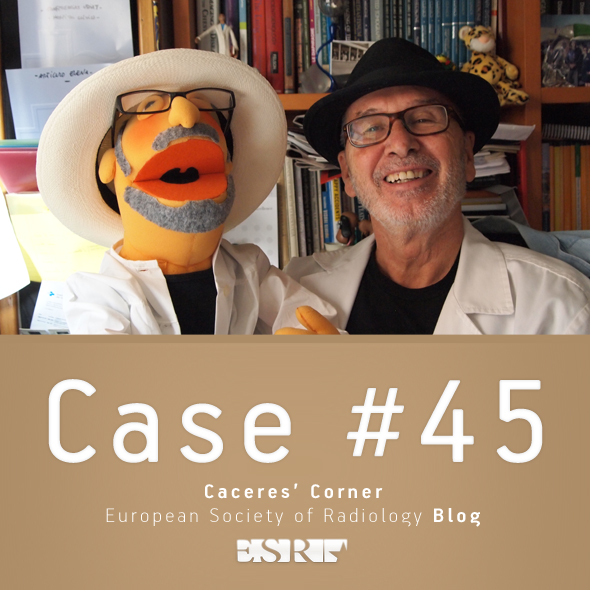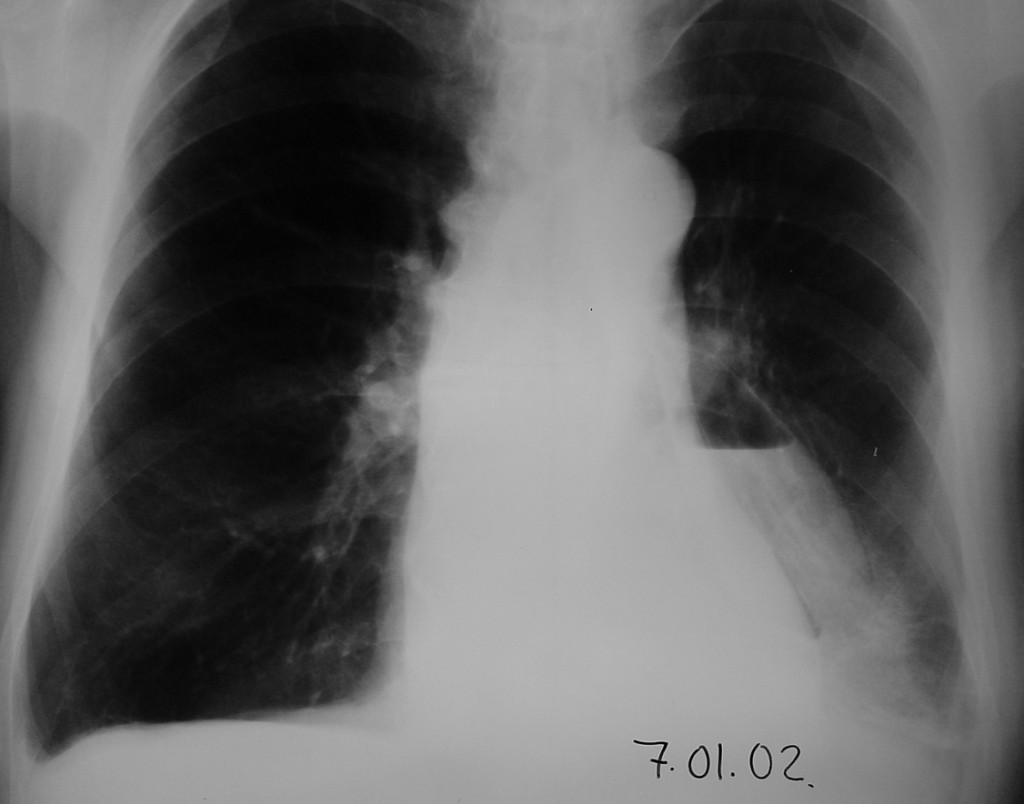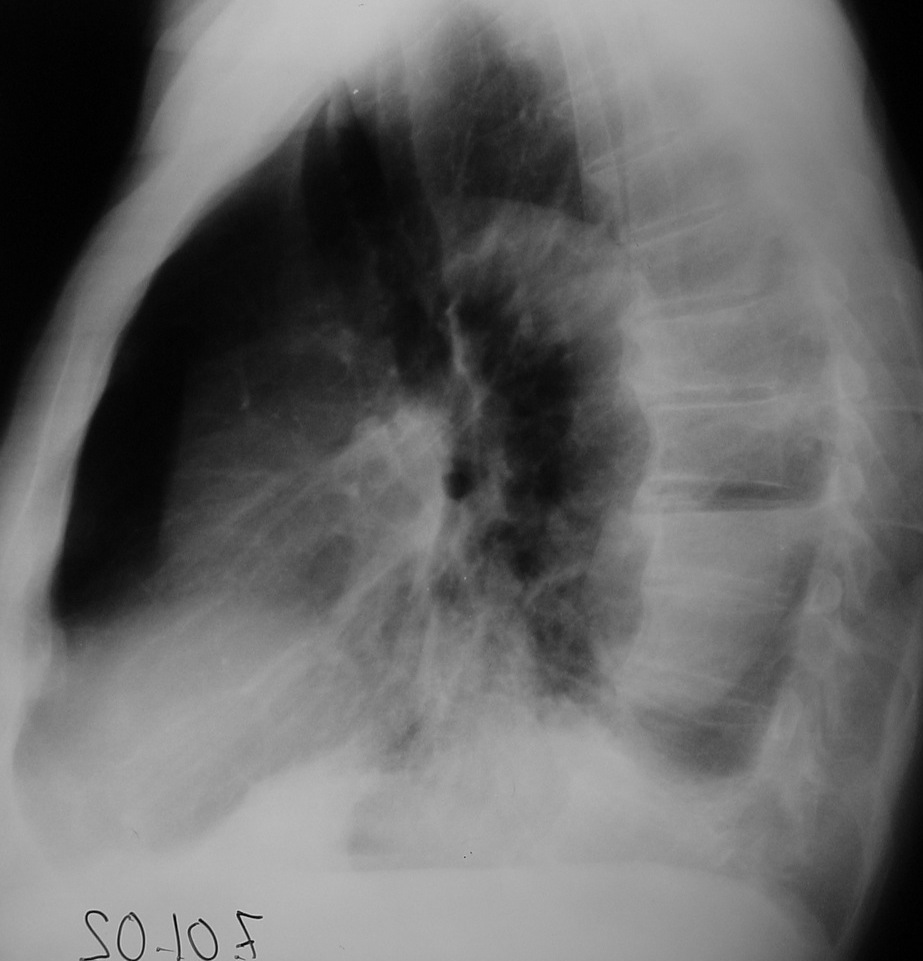We are having a December sale (everything must go!) and during this month Muppet will show only cases with air-fluid level. We start with a vintage case (2002) of a 76-year-old male with left lower lobe pneumonia.
1. Infected bulla
2. Congenital cyst
3. Pneumatocele
4. None of the above
Findings: PA chest shows an air-space opacity in the left lower lobe, compatible with the clinical diagnosis of pneumonia. In addition, there is an elongated thin-walled cavity with an air-fluid level (arrows), located posteriorly in the lateral view (arrows).

Fig. 1
Follow-up films show that the cavity is diminishing in size. The air-fluid level is now clearly within the left major fissure (Fig. 2a arrows). Later film shows that the air has disappeared, with a small amount of fluid remaining (Fig. 2b arrow).

Fig. 2
Final diagnosis: loculated hidropneumothorax in the major fissure.
Muppet intends this case to be his Christmas present, because it is a rare condition and you probably did not know about it. Muppet is ashamed to confess that he does not know the exact etiology of this finding, although he suspects it is due to air seeping through the fissure layers.
Fig. 3 shows another recent case, secondary to lung transplant, with air in minor and major fissures (arrows).

Fig. 3
Congratulations to Dr. Strangelove. He was the only one to suggest the diagnosis.
Teaching point: there is no obvious teaching point in this case. It is just an unusual image, easily recognisable if you think of it, and that should be included in the differential diagnosis of thin-wall cavities.








The most likely diagnosis is an infected bulla. Identify signs of lung hyperinflation (flattened diaphragm, increased retrosternal air ..). It supports the existence of a left lower lobe pneumonia with concomitant emphysematous bulla secondarily infected.
This time thinking simple.
The air-fluid level is located in the posterior mediastinum.
Possible diagnosis: a hiatal hernia (also can’t see the gastric fundus below the diaphragm)
Also there is LLL pneumonia ( posterior- inferior segm of LLL)due to aspitation- (when having a hernia, reflux of gastric contents in supine position causes aspiration pneumonia in this old man).
Risposta secca:acalasia esofagea con broncoplmonite da bronco-aspirazione. Salvate MESSI!!!!!
4. None of the above
It looks like a hiatal hernia, althoug the lesion is posterior and lateral
To point out other options, traumatic diaphragmatic hernia?
intrathoracic gastroplastia?
No trauma, no previous surgery.
If is it posterior and lateral should not be a hiatus hernia. Other options?
New try. These are truly December sales!
The man has pneumonia, so I’ll go for broncho pleural fistula and empyema.
Good try! But out of the mark
none of the above
diffretial diagnosis are:1.aschalazia 2.paraesophagial hiatal hernia
Infecteted bulla.due to patient’s lung appearance
There is a left posterior mediastinal mass with an air-fluid level and a left lower lobe consolidation. This is most likely a left Bochdalek hernia
There is some LLL atelectasis, so the mayor fissure should be displaced to the position where the lenticular discoid image is. The air-fluid level is wider in the lateral chest Xray than in the PA suggesting also pleural origin.
Loculated hydropneumothorax.
Good thinking! Tell me where the loculation is and you will be a hero.
Well, I mean that the loculation is IN the mayor fissure (displaced because of the atelectasis).
By the way, what is that air anterior to the trachea (lateral view) ? Some kind of contralateral lung herniation ?
You are a hero! Congratulations!
I cannot answer your question. This is an old case and I have only a few CT slices of the lower chest.
La “sede” del livello idro-aereo, cioè se intra-polmonare o pleurica si basa appunto sulla “differente” morfologia, rispettivamente sferica od allungata , nei diversi radiogrammi(AP-LL-IN DECUBITO lat): tuttavia nel caso in oggetto , la reale grandezza del livello è ,in AP, parzialmente mascherata dall’opacita’ cardiaca.Inoltre è stato suggerito che l’opacità polmonare sia una polmonite( post-ostruttiva?).Un idro-pneumotorace,saccato, allora dovrebbe derivare da fistola broncopolomonare , per necrosi tumorale, in soggetto con precedenti pleuritici.
Infected bulla most likely